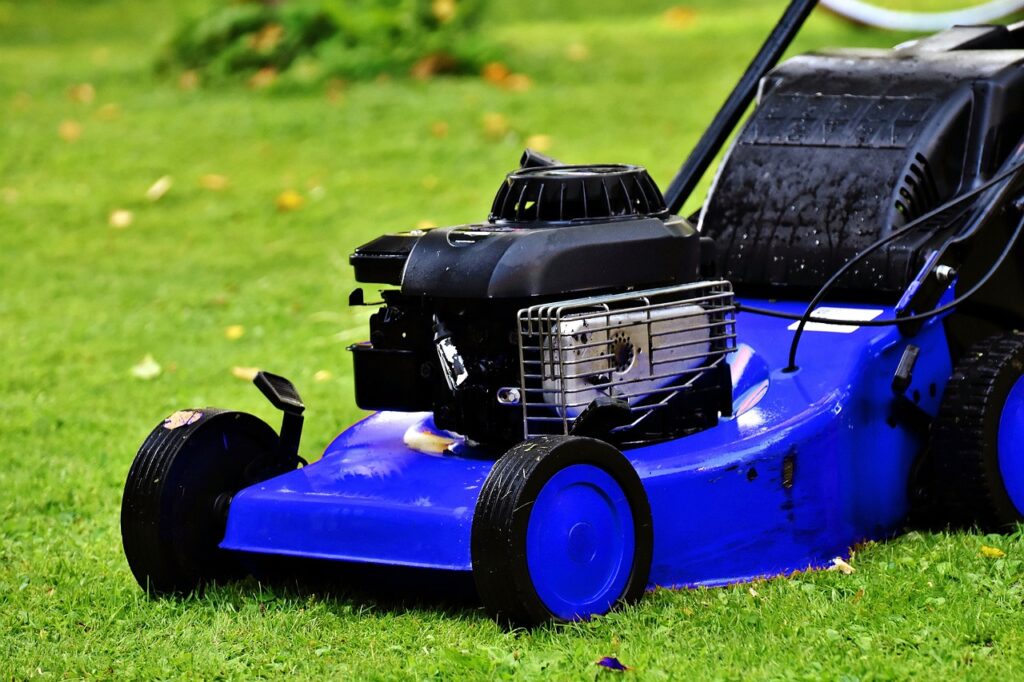Seasonal transitions usher in fresh starts bright flowers in spring, vibrant green lawns in summer, and the cozy colors of autumn. However, they can also pose challenges for your yard. A frequent problem that many homeowners encounter is the formation of ruts in their lawns.
These unattractive grooves or indentations not only diminish the visual appeal of your lawn but may also indicate deeper issues. By understanding how seasonal changes contribute to these ruts, you can take steps to safeguard your lawn and maintain its health throughout the year.
What Leads to Ruts in Your Lawn?
Before we explore the seasonal influences, let’s define what ruts are and their causes. Ruts are compacted or sunken areas in the lawn resulting from repeated pressure or weight, often due to foot traffic, heavy machinery, or even natural events. When the soil beneath the grass becomes compacted or uneven, it leads to a visible groove or depression.
Although improper maintenance or excessive use can result in ruts, the seasons themselves have a surprisingly significant impact on the development of these flaws.
Spring: The Softening of the Ground
Spring is a season of rebirth for your lawn, but it’s also when the ground is most vulnerable. As the frost melts and temperatures rise, the soil becomes soft and waterlogged, making it less stable. During this time:
- Foot Traffic Takes a Toll: Walking on the lawn when it’s soft can compress the ground, leading to ruts that may harden as the soil dries out.
- Heavy Equipment Compacts the Soil: Spring is a popular time for gardening or landscaping projects, but using wheelbarrows, mowers, or even cars on the wet ground can create long-lasting impressions.
- Drainage Issues: Poor drainage can cause water to pool in certain areas, weakening the soil further and making it susceptible to ruts.
To protect your lawn in spring, try to limit foot traffic when the soil is wet and ensure proper drainage with aeration or leveling low spots.
Summer: Heat Stress and Dry Soil
The sunny days of summer are prime time for enjoying your yard, but they can also be tough on your lawn. High temperatures and dry conditions can lead to soil compaction, which is a key contributor to ruts.
- Compacted Soil: With little rain and frequent use, the soil hardens over time. A compacted lawn has less give, making it more prone to grooves forming under heavy weight.
- Overwatering or Underwatering: An uneven watering schedule can exacerbate the problem. Overwatering creates soggy areas prone to compression, while underwatered lawns lose their resilience and fail to recover from pressure.
- Increased Activity: Summer BBQs, lawn games, and kids running around can wear down high-traffic areas, especially if the lawn isn’t properly maintained.
Combat summer ruts by maintaining a consistent watering schedule, aerating compacted soil, and rotating activity zones to avoid overusing the same spots.
Fall: Preparing for Dormancy
Fall might seem like a time when your lawn gets a break, but it’s actually a season when ruts can quietly take hold. As the weather cools and leaves fall, several factors come into play:
- Soil Saturation from Rain: Similar to spring, fall often brings periods of heavy rain. Excess moisture can soften the soil, making it susceptible to ruts caused by walking, mowing, or leaf removal equipment.
- Heavy Equipment for Cleanup: From leaf blowers to rakes and even wheelbarrows, fall lawn maintenance tools can cause damage if used repeatedly in the same areas.
- Dormant Grass: As grass starts to go dormant in preparation for winter, it becomes less able to bounce back from pressure. This makes any damage during fall more noticeable.
To avoid fall ruts, make it a habit to alternate your mowing or cleanup patterns and avoid working on the lawn after heavy rains.
Winter: The Freeze-Thaw Cycle
Winter is when your lawn’s true endurance is tested. While you may think your grass gets a break under a blanket of snow, the season presents unique challenges.
- Freeze-Thaw Cycle: As temperatures fluctuate, the soil repeatedly freezes and thaws. This movement can cause soil to shift, creating uneven areas or weakening the lawn’s structure.
- Foot Traffic on Frozen Ground: Walking on frozen or frost-covered grass can cause the blades to break and compact the soil beneath, setting the stage for ruts to form.
- Snow Plows and Heavy Loads: If you use heavy equipment to clear snow or park vehicles on the lawn, this weight can compress the frozen soil, leaving grooves that are difficult to fix come spring.
To protect your lawn in winter, mark areas where vehicles or snow-clearing equipment shouldn’t go, and avoid walking on frosted grass when possible.
How to Fix and Prevent Ruts in Your Lawn
Ruts don’t have to be a permanent fixture in your yard. With the right approach, you can repair existing damage and prevent new ones from forming.
- Aerate the Soil: Consistent aeration alleviates soil compaction, enabling grass roots to develop deeper and more robust.
- Topdress Low Spots: Use a blend of soil and compost to fill in depressions, and overseed the region to promote regrowth.
- Rotate Activity Areas: Distribute heavy usage throughout your yard to prevent over-compaction in particular spots.
- Use Lawn-Friendly Tools: Whenever feasible, choose lightweight, turf-safe tools.
By implementing these proactive strategies, your lawn will remain lush, level, and healthy throughout the year.
A Year-Round Lawn Care Partner
At Dash Landscaping, we understand the challenges seasonal changes bring to your lawn. From spring aeration to fall cleanup and winter prep, our expert team is here to help. Let us take the guesswork out of lawn care so you can enjoy a yard that stays rut-free and beautiful year-round.
Contact us today to schedule a consultation or learn more about our lawn care services. Together, we’ll keep your lawn looking its best in every season!

